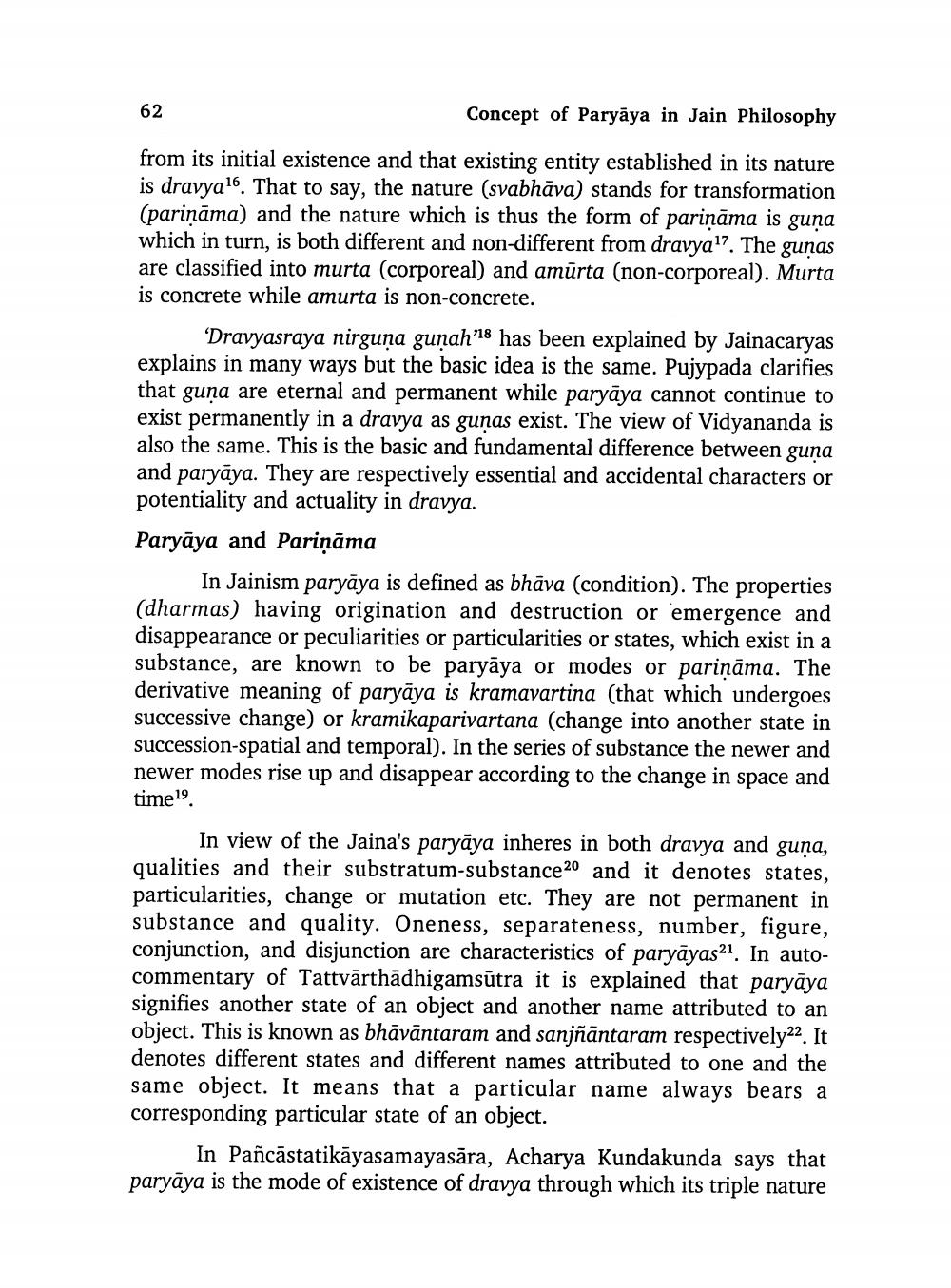________________ 62 Concept of Paryaya in Jain Philosophy from its initial existence and that existing entity established in its nature is dravya16. That to say, the nature (svabhava) stands for transformation (parinama) and the nature which is thus the form of parinama is guna which in turn, is both different and non-different from dravya17. The gunas are classified into murta (corporeal) and amurta (non-corporeal). Murta is concrete while amurta is non-concrete. 'Dravyasraya nirguna gunah'18 has been explained by Jainacaryas explains in many ways but the basic idea is the same. Pujypada clarifies that guna are eternal and permanent while paryaya cannot continue to exist permanently in a dravya as gunas exist. The view of Vidyananda is also the same. This is the basic and fundamental difference between guna and paryaya. They are respectively essential and accidental characters or potentiality and actuality in dravya. Paryaya and Parinama In Jainism paryaya is defined as bhava (condition). The properties (dharmas) having origination and destruction or emergence and disappearance or peculiarities or particularities or states, which exist in a substance, are known to be paryaya or modes or parinama. The derivative meaning of paryaya is kramavartina (that which undergoes successive change) or kramikaparivartana (change into another state in succession-spatial and temporal). In the series of substance the newer and newer modes rise up and disappear according to the change in space and time19 In view of the Jaina's paryaya inheres in both dravya and guna, qualities and their substratum-substance20 and it denotes states, particularities, change or mutation etc. They are not permanent in substance and quality. Oneness, separateness, number, figure, conjunction, and disjunction are characteristics of paryayas21. In autocommentary of Tattvarthadhigamsutra it is explained that paryaya signifies another state of an object and another name attributed to an object. This is known as bhavantaram and sanjnantaram respectively22. It denotes different states and different names attributed to one and the same object. It means that a particular name always bears a corresponding particular state of an object. In Pancastatikayasamayasara, Acharya Kundakunda says that paryaya is the mode of existence of dravya through which its triple nature




